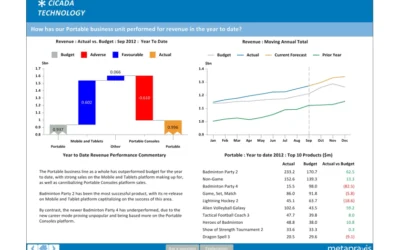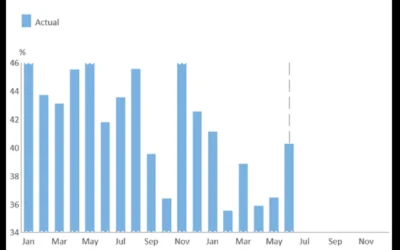FP&A
Fresh foods sector: understanding profitability
We look at recent data from the UK retail industry, and at how profitability analysis can help make the most of seasonal variations in demand.

Received wisdom may dictate that January is a lean month for food retailers. But health-conscious behaviour means that groceries is one part of the sector where that tradition may be ending. Research released this week showed that sales of fresh fruit and vegetables, nuts, poultry and fish all rose strongly in January, resulting in an appreciable boost to the sector overall. Increased awareness of healthy lifestyle choices has clearly had an impact on consumers’ post-Christmas behaviour, if not so much on the festive binge itself.
Of course, this isn’t a completely unpredictable phenomenon, but making the most of this and other seasonal variations in the year is a challenge throughout the industry. This is particularly true where fresh prepared foods are concerned, as raw materials are perishable and the true costs of manufacturing are not always clear.
However, that complexity represents an opportunity for businesses with a good understanding (and, therefore, good control) of costs and profit at the SKU level. In the case of fresh prepared foods companies, being able to analyse the true costs involved in manufacturing a particular product (as opposed to the standard costs) makes it possible to identify potential for process improvement leading to well targeted cost reduction. It also enables those companies to work with retailers on specific promotions that will return positive profit margins.
Most organisations capture the information needed to make decisions such as this, but most do so in separate siloed systems. A system of data integration of that avoids the need for a costly data warehouse project is one part of the solution. But truly reliable figures can only really be achieved by basing calculations on an accurate mathematical model of the business.
An analytics tool like this, focused on the optimisation of margin, can be retrospectively tested against actual results, and refined as part of an iterative process. Such technology can inform both day-to-day operations and long-term strategy, and means that retail suppliers are better-placed to negotiate pricing and supplier deals.
FOLLOW US
Latest Posts
What makes a good Board Report?
FP&A What makes a good Board Report? We have created a set of key principles for companies looking to improve the relevance and usefulness of their Board ReportA company’s board of directors is collectively responsible for leading and directing its affairs in...
Moving Annual Average – a powerful data transformation
FP&A Moving Annual Average - a powerful data transformation Learn how to use a process to calculating an MATWe can’t use an MAT for a stock type item (like Accounts Receivable or Headcount) or a statistic (such as gross margin % or the £/$ Exchange Rate) because...
Choosing the scale for a graph
FP&A Choosing the scale for a graph The scale for a graph axis can have significant impact on how an audience interprets a message and is an important part of optimising data visualization.The scale selected for a graph axis has a significant impact on how the...




